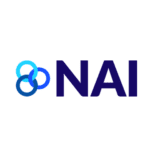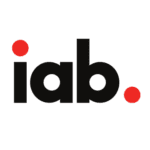How are KPIs important in the Healthcare industry?
In the intricate realm of healthcare, measuring success goes beyond numbers and revenue. Key Performance Indicators (KPIs) in the healthcare industry provide a comprehensive framework for evaluating the quality of care, patient outcomes, and operational efficiency. By diligently monitoring and acting upon these KPIs, healthcare organizations can drive continuous improvement, enhance patient experiences, and ultimately contribute to the betterment of public health.
In the fast-paced and complex world of healthcare, success is often measured not only by the number of patients treated but also by the quality of care provided. Key Performance Indicators (KPIs) in the healthcare industry play a vital role in helping healthcare organizations assess their performance, identify areas for improvement, and ultimately enhance patient outcomes. In this blog, we will explore some of the crucial KPIs that drive excellence in the healthcare industry.
Patient Satisfaction and Experience
At the heart of healthcare lies the patient. Measuring patient satisfaction and experience is a fundamental KPI that reflects the quality of care provided. This can be gauged through patient surveys, feedback forms, and online reviews. Factors such as communication with healthcare providers, wait times, and overall treatment experience contribute to a patient’s perception of the care they receive. By actively monitoring and addressing patient feedback, healthcare organizations can improve their services and build stronger patient-provider relationships.
Clinical Quality and Patient Outcomes
The ultimate goal of healthcare is to improve patient health and well-being. Clinical quality and patient outcomes are KPIs that measure the effectiveness of medical treatments and interventions. Metrics such as mortality rates, complication rates, readmission rates, and infection rates provide valuable insights into the success of medical procedures and therapies. Tracking these KPIs over time allows healthcare providers to identify patterns, implement best practices, and optimize treatment protocols.
Hospital Acquired Infections (HAIs)
HAIs are infections that patients acquire during their stay in a healthcare facility. These infections not only jeopardize patient health but also incur additional costs for treatment and extended hospital stays. Monitoring the rate of HAIs and implementing rigorous infection control measures is crucial for maintaining patient safety and minimizing healthcare-associated risks.
Staff Productivity and Efficiency
Efficient healthcare delivery relies heavily on a well-organized workforce. Staff productivity and efficiency KPIs include metrics such as patient-to-staff ratios, average length of stay, and utilization of resources. Optimizing these metrics ensures that healthcare providers can deliver timely care without compromising quality.
Financial Performance
Financial stability is essential for healthcare organizations to continue delivering high-quality care. KPIs such as revenue per patient, cost per procedure, and operating margins provide insights into the financial health of a healthcare institution. By managing costs, maximizing revenue, and making informed financial decisions, healthcare organizations can ensure sustainable growth while maintaining the quality of care.
Physician and Staff Engagement
Engaged and motivated healthcare professionals are more likely to provide exceptional care. KPIs related to staff engagement, such as employee satisfaction surveys, turnover rates, and staff retention, reflect the work environment and organizational culture. Fostering a positive workplace culture can lead to improved patient outcomes and overall satisfaction.
Timely Access to Care
Accessibility to healthcare services is a critical factor in ensuring patient well-being, according to research. KPIs such as appointment wait times, emergency room wait times, and timely access to specialists help measure the efficiency of healthcare delivery. Reducing wait times and streamlining appointment scheduling processes can enhance patient access and satisfaction.




